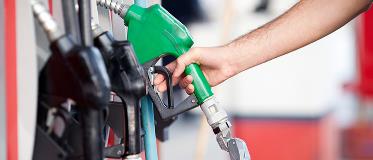Five Ways The Fuel Price Hike Will Impact You


The prices of petrol and diesel have surged sharply in India over the last few months on the back of rising global crude prices. Remember, India shifted to free pricing of fuels in 2014 and since then, the prices of petrol and diesel have been determined by the oil-marketing companies.
The tables below display how the prices of petrol and diesel have risen by 12% and 20%, respectively, in Maharashtra in the last six months alone:
|
Petrol (23rd May) |
Petrol (1 month ago) |
Petrol (3 months ago) |
Petrol (6 months ago) |
|
Rs85.03/litre |
Rs82.52/litre |
Rs79.39/litre |
Rs76.52/litre |
|
Diesel (23rd May) |
Diesel (1 month ago) |
Diesel (3 months ago) |
Diesel (6 months ago) |
|
Rs72.80/litre |
Rs70.24/litre |
Rs66.19/litre |
Rs60.96/litre |
Here are the five key takeaways from the fuel price hike and how they will impact you.
-
You will have to economize the use of your personal vehicles
Looking at the number of cars and two-wheelers jostling for space on Mumbai’s streets, it is hard to believe that the price of fuel has risen this sharply in the last six months. Now, it has started to pinch household budgets. A 20% increase in the price of diesel in six months is nearly eight times the inflation rate. Effectively, the higher price of fuel is also making your household budget tighter. You now have to either shell out more for your fuel bills or start using public transport. To begin with, you will have to stop using a vehicle to go shop from down the road.
-
Higher fuel prices will make a lot of other products dearer
This might surprise you, but higher fuel prices make a lot of other products costlier too. Think of all the costs entailed in getting the produce off a farm to your plate. A 20% rise in the price of diesel will put pressure on the prices of food that you consume. It will also impact a lot of other products, including footwear, textiles, FMCG products, cement, etc., and all these will translate into higher costs. Effectively, higher fuel prices will hit you in more ways than one.
-
Fuel price and interest rates – But how are they related?
You may wonder how fuel prices and interest rates are related and what it means for you. There is an interesting relationship here. When fuel prices goes up, CPI inflation (retail inflation) goes up. That is because of two reasons. Firstly, fuel is a part of the inflation basket and that results in higher inflation. Secondly, fuel has strong downstream effects and makes a lot of other products costlier. When CPI inflation goes up, the RBI is constrained to hike interest rates. If you are holding on to debt funds in your portfolio, you will find the debt fund NAVs falling due to rising interest rates. At the same time, your equity portfolio will also face the brunt as higher interest rates will put pressure on equity valuations. Thus, higher fuel prices will impact your equity and debt portfolios too.
-
Keep an eye on your mid-cap and small-cap portfolios
You must be wondering why mid-caps and small-caps are correcting so much while the large-caps seem to have lost only a limited value since the Union Budget. The reasons are not far to seek. When oil prices fell from $110/bbl in November 2014 to $29/bbl in January 2016, the biggest beneficiaries were those from the mid-cap and the small-cap space as the benefits of lower costs are immediately felt here. This is working in reverse now. With crude oil prices shooting up to $80/bbl, costs are going up even as margins compress for the small-caps and the mid-caps. So, if you are holding a portfolio of mid-cap and small-cap stocks or funds, be cautious.
-
You will have to pay more for your child’s education abroad
Your daughter who studies in the US is suddenly telling you that your monthly remittance is not sufficient. It is not that she has started spending more but it is just that your fixed rupee remittances are getting lesser dollars in return. But why? Higher fuel prices mean a higher trade deficit, which leads to a weaker rupee. Today, you need Rs68.33 to buy $1 as compared to just Rs63.50 five months ago.
In a nutshell, the impacts of dearer oil prices are more far-reaching than you have imagined!Start Investing in 5 mins*
Rs. 20 Flat Per Order | 0% Brokerage
